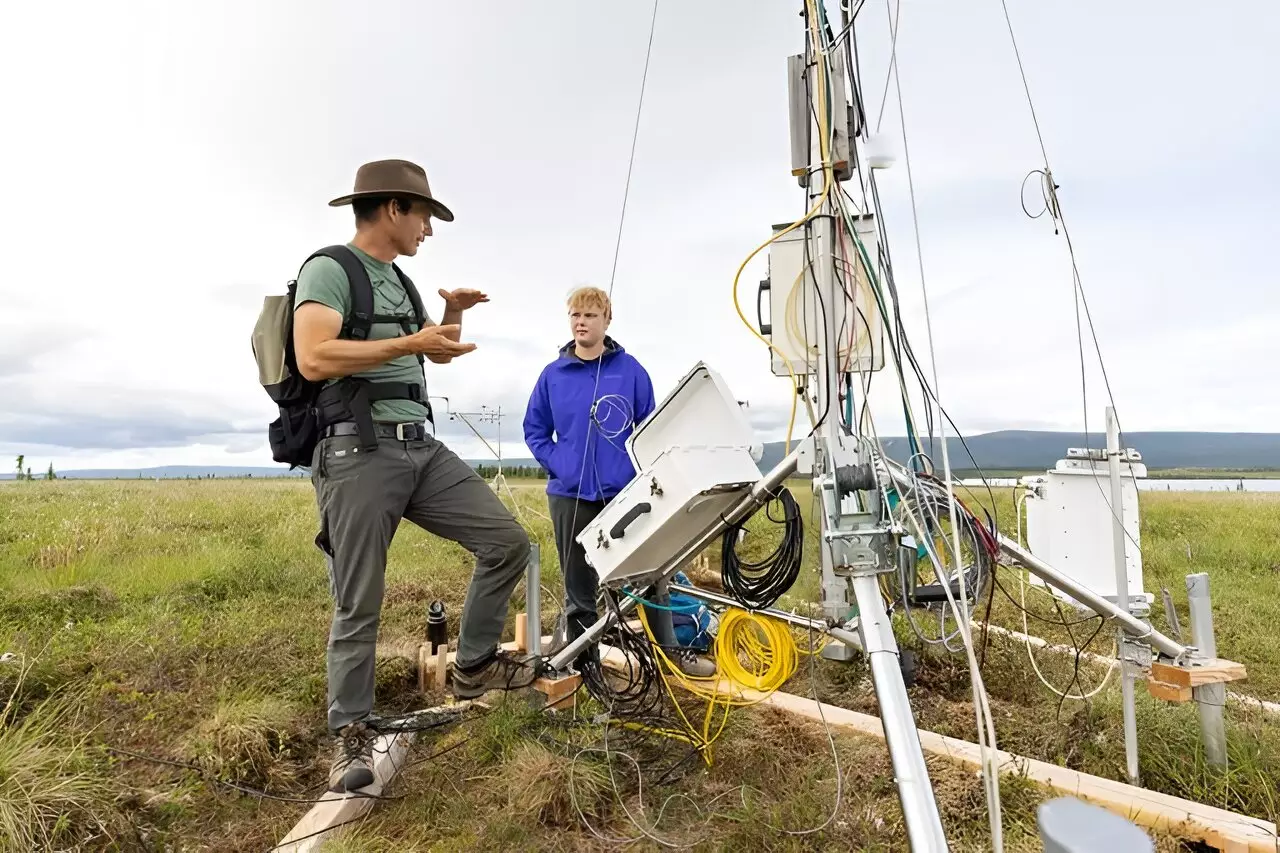Recent investigations spearheaded by Ted Schuur, a prominent Regents’ professor of biological sciences at Northern Arizona University, underline the pressing questions surrounding the warming Arctic tundra. Through collaborative efforts with researchers from around the globe, organized by the Permafrost Carbon Network, three pivotal papers delve into the biological processes triggered by climate change in one of the world’s most vulnerable ecosystems. Specifically, the Arctic permafrost region, encompassing vast stretches of tundra and boreal forest, stands as a crucial carbon reservoir that stores approximately one-third of the world’s soil organic carbon, despite accounting for only 15% of Earth’s soil area. With temperatures rising alarmingly faster than global averages—three to four times as rapidly—understanding the dynamics of carbon cycling in these areas has never been more urgent.
Carbon Cycling: A Double-Edged Sword
Within the intricate dance of Earth’s ecosystems, carbon plays a pivotal role. Through the process of photosynthesis, plants absorb atmospheric carbon, a known phenomenon termed “uptake,” while biological functions such as decomposition release carbon back into the atmosphere—collectively known as ecosystem respiration. The permafrost ecosystems, once considered stable, are now revealing troubling trends as warming exemplifies the fragile balance of this cycle. The potential release of substantial carbon emissions from these regions could amplify climate change effects by an estimated 10% to 20% by 2100, presenting a threat more severe than the collective emissions of large industrialized nations.
The implications of these findings extend far beyond academic interest. Human-induced greenhouse gas emissions remain the primary contributor to climate change, yet the additional emissions expected from thawing Arctic permafrost underscore significant oversight in global climate agreements like the Paris Agreement. Notably, the targets set under this treaty largely fail to accommodate the emissions potential of thawing permafrost, revealing the need for more ambitious and comprehensive policy frameworks.
Empirical Studies and Global Significance
Schuur and his fellow researchers embark on a critical data-gathering mission to illuminate the various factors influencing ecosystem respiration across the globe. One significant study featured in *Nature Climate Change* examined carbon dioxide flux from 70 ecosystems, both permafrost and non-permafrost, over extended periods. A troubling finding emerged—while non-permafrost areas stored increased carbon due to heightened summer plant growth, permafrost ecosystems did not exhibit the same resilience; their fall and winter carbon losses neutralized any gains made during the summer months.
The urgency of this ecological shift is amplified by statements from key researchers, including Sue Natali, who highlight the alarming trend of increased carbon release during typically dormant months. Such insights illuminate the repercussions of rising temperatures and deeper summer thaws concerning carbon cycling in the Arctic, suggesting a trajectory toward bolstered climate change feedback mechanisms.
In another insightful study published on April 17 in *Nature*, interdisciplinary researchers simulated warming through miniature greenhouses at various tundra sites, revealing a mean increase of merely 1.4°C in air temperature, which corresponded to a 30% spike in ecosystem respiration. Here, local environmental elements such as water availability and nutrient levels showcased their influence on either carbon uptake or respiration rates, reinforcing the complexity of climate feedback systems that policymakers must understand for creating robust climate legislation.
The Interconnected Nature of Global Research
The collaborative spirit of this research extends beyond mere data collection; it highlights an intricate web of global cooperation intricately tied to understanding permafrost dynamics. Each dataset contributes nuanced insights into how these critical ecosystems may respond to impending climate challenges. However, disruptions such as geopolitical issues can complicate this endeavor, as evidenced by a further study led by Schuur, published on April 30. The current geopolitical landscape has hindered access to essential permafrost sites, particularly in Russia, which historically hosted a significant portion of the research network. The resultant data gap threatens to diminish our understanding of ecosystem variability throughout the Arctic, forcing the scientific community to devise alternative strategies to gather comparable data elsewhere.
The obstacles hindering research into the Arctic permafrost relay an urgent message: the urgency of understanding these unique ecosystems must remain at the forefront of global climate discussions. As scientists recognize that the permafrost is transitioning into a carbon source, the need for policy measures that address these looming threats grows ever more critical. With more extensive data and impactful collaborations, researchers can lay the groundwork for a more sustainable and informed future, underscoring the profound necessity of addressing climate change with unparalleled urgency.

